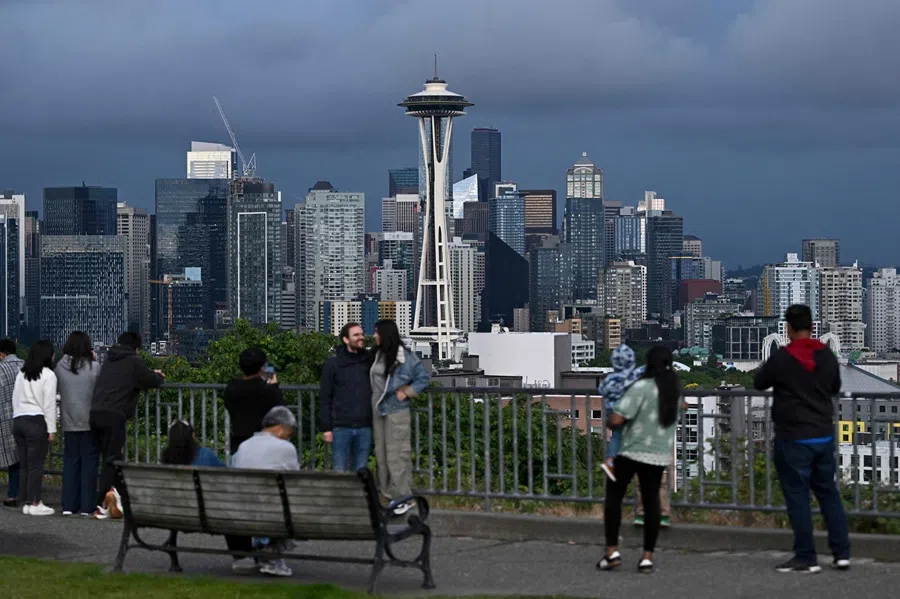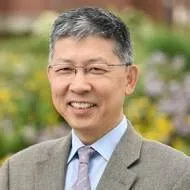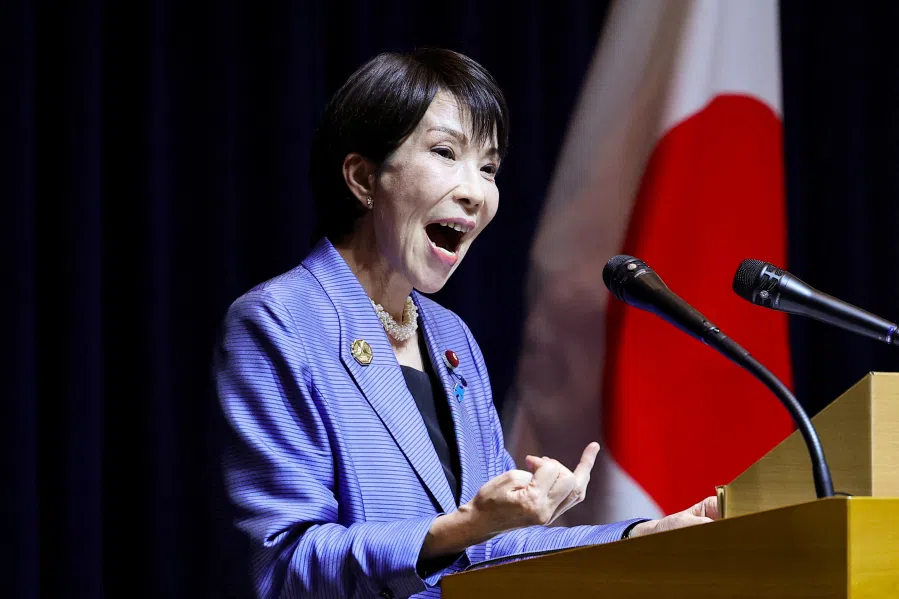Xi’s long game vs Trump’s deals: A clash of global futures
Xi Jinping and Donald Trump, leaders of the world’s most powerful nations, embody radically different styles and visions for global order. Their diverging paths, from Xi’s long-term statecraft to Trump’s transactional populism, risk a bleak future if ideological divides persist. US academic Zhu Zhiqun examines this quagmire.

China’s 2025 Victory Day military parade sparked a debate over whether the world is quickly splitting into two opposing camps again: US-led Western democracies and China-led autocracies. Beijing rolled out the red carpet, but most of the over two dozen world leaders who attended the parade came from the Global South. The absence of leaders from the US and its major allies was partially due to a lobbying campaign by Japan, which views World War II commemorations with mixed feelings.
Only two Western heads of state showed up: Slovakian Prime Minister Robert Fico and Serbian President Aleksandar Vučić. Representatives from intergovernmental organisations, including the United Nations and the Association of Southeast Asian Nations, were also present.
A multipolar global system is emerging, in which the West does not have dominance in global affairs anymore.
West: rejecting multipolarity, focusing on ideology
Some Western observers highlight the gathering of authoritarian leaders at the parade, notably Chinese President Xi Jinping, Russian President Vladimir Putin, Iranian President Masoud Pezeshkian and North Korea’s Supreme Leader Kim Jong Un — leaders of what some analysts call an “axis of upheaval”.
Such a biased view does not withstand scrutiny and fails to grasp the great transformation the world is undergoing now. A multipolar global system is emerging, in which the West does not have dominance in global affairs anymore. Yet major Western countries seem reluctant to accept this reality and still see the world through an ideological lens.
With the US under President Donald Trump withdrawing from international institutions like the Paris Climate Agreement and the World Health Organisation, and with a US-supported Israeli military continuing its genocide in Gaza, who is really causing “upheaval” in world affairs?

As a new global system is gradually taking shape, the US and its Western allies are facing serious challenges. For example, the US and NATO have failed to stop the Russia-Ukraine war after using both carrots and sticks. And despite some shared values, India is unwilling to fully side with the West in great power politics. India’s robust trade with Russia deeply irritates Washington and its improving relations with China shakes the foundation of the Quadrilateral Security Dialogue (Quad), a security group aimed at countering China.
The two leaders are not only steering their nations in different directions but also offering opposing visions for the world.
The US and China: different leadership styles
Of course, the global focus is on the US and China, led by two powerful leaders respectively. Trump and Xi are vastly different in many ways, such as personality, leadership style, domestic challenges and worldviews. The two leaders are not only steering their nations in different directions but also offering opposing visions for the world.
Trump is a flamboyant businessman who tends to speak spontaneously and hyperbolically. He views international relations as transactional, bringing his cost-benefit business analysis to foreign policy making. In contrast, Xi is a typical reserved communist party cadre who is not accustomed to showing his feelings publicly. Even during the celebrative parade, he appeared rather serious most of the time.
Trump was elected to a second term in a highly divided nation. He claimed to be “saved by God” to make America great again. His supporters firmly believed it. His critics would argue that he is simply unfit for the presidency, given his criminal status and his contentious policies. With a big mouth spitting out uncouth and sexist language, he is not a role model for young Americans either.
US presidents have the authority to declare a national emergency to enable the federal government to respond quickly to a crisis. But Trump has already invoked this power more frequently than his predecessors and for situations that do not qualify as emergencies.
Those emergency declarations have been used to justify hundreds of actions — including immigration measures, sweeping tariffs, energy deregulation and deployment of troops to major cities — that would typically require congressional approval or lengthy review. Protesters have called the Trump administration “a fascist regime”.
Though some of his measures are controversial, ordinary people in China can see the result of the corruption crackdown, and bureaucracy at all levels in China has become more efficient.
Xi rules a largely unified nation with a strong hand and faces few domestic challenges to his control. He quickly consolidated power after becoming the Party Secretary in fall 2012 and the President in spring 2013.
While keeping the economy growing, he launched a massive anti-corruption campaign and removed all potential political rivals. Though some of his measures are controversial, ordinary people in China can see the result of the corruption crackdown, and bureaucracy at all levels in China has become more efficient.

Xi and Trump are managing two totally different systems. Without having to deal with elections, leaders in China can afford to take a longer view in making policies. Without the checks and balances, Xi has a much freer hand to push forward his policies. Through patriotic education and major events like the Victory Day military parade, Xi has kept nationalism alive, which helps to maintain national unity and boost national pride.
According to a new survey conducted by the Chicago Council on Global Affairs and The Carter Center, nine in ten Chinese support their country’s active participation in world affairs, with 48% preferring China to play a shared leadership role and 41% saying China should take a dominant one. By contrast, in a 2024 Chicago Council survey, just 56% of Americans preferred an active US global role, one of the lowest levels on record.
Xi’s vision of the future is a world in which different countries and peoples can thrive together and live harmoniously, while Trump’s is a world in which the US gradually abandons its global leadership and puts its own interests first and foremost.
US bowing out
Trump’s “America First” policy is disappointing for people who hope the US will continue to play a leadership role in world affairs. His vision for the world is centred on America’s own interests. Few people still believe the US is a beacon of hope and a shining city upon a hill.
Meanwhile, Xi has proposed a series of global initiatives: Global Development Initiative in 2021, Global Security Initiative in 2022, Global Civilisation Initiative in 2023, and most recently, the Global Governance Initiative unveiled at the Shanghai Cooperation Organization (SCO) summit in Tianjin on 1 September 2025. Through these initiatives, Xi is offering China’s solutions to global challenges, projecting himself as a global leader who champions cooperation. However, it is unclear how these initiatives will be implemented.
Xi’s vision of the future is a world in which different countries and peoples can thrive together and live harmoniously, while Trump’s is a world in which the US gradually abandons its global leadership and puts its own interests first and foremost. Such opposing visions from the two most powerful countries make the turbulent world even more divided.
A few US allies, including Japan, the Philippines, South Korea and a hesitant Europe and Australia, still cling to the declining US leadership while the majority of Global South countries are expanding cooperation through multilateral institutions such as the SCO and BRICS.

The Beijing parade and the SCO Tianjin summit are the latest manifestations of an emerging multipolar world. In this new system, the old, sanction-based foreign policy does not work anymore. For example, the Trump administration imposed 50% tariffs on India’s exports, but India could easily strengthen economic and diplomatic ties with Russia, China and other trading partners.
Trump is unlikely to win the so-called tariffs war. China’s decision to restrict rare earth exports to the US could potentially disrupt the global supply chain and cripple US military and chip industries, which is why the Trump administration is seeking a trade deal with China.
If the US, China, Russia, India and other powers continue to be divided along ideological and political lines, there will be no hope for a better future for humanity.
Can the US, China and other powers still work together?
A world in turmoil calls for leadership and cooperation. It is time for the US, China and other powers to work together and instill hope to the world. Unfortunately, a Pew Research Center study in spring 2025 reveals that in the 24 countries surveyed, few people have confidence in either Trump or Xi to do the right thing regarding world affairs.
Great power rivalry is dominating global politics today. India has been wooed by the West to be a counterweight to China, but is being punished for not following the US leadership. Trump’s effort to end the Russia-Ukraine war was interpreted by some as a “reverse Nixon” policy, with the wishful thinking that the US can drive a wedge between Russia and China. Such kind of naïve thinking shows that many in the West are misreading the international situation and ignoring India’s and Russia’s strategic autonomy.
In a turbulent world today, wars continue to plague different regions, most notably between Russia and Ukraine and between Israel and Palestine. In addition, the international community needs to deal with non-traditional security challenges such as climate change, public health, human and drug trafficking, and financial stability. If the US, China, Russia, India and other powers continue to be divided along ideological and political lines, there will be no hope for a better future for humanity.





![[Big read] China’s 10 trillion RMB debt clean-up falls short](https://cassette.sphdigital.com.sg/image/thinkchina/d08cfc72b13782693c25f2fcbf886fa7673723efca260881e7086211b082e66c)